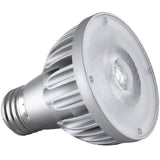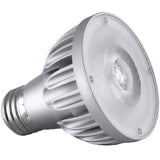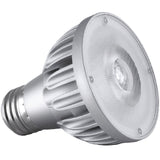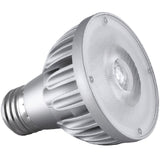LED Retrofit Downlights Selection Guide
Posted by Dave on for ProLampSales

Recessed downlights are a common lighting fixture found in most commercial and residential buildings.
Lobbies, hallways and conference rooms often take advantage of the clean ceiling look of a recessed downlight to provide ambient or accent lighting in these spaces.
In homes, kitchens are the most common location where recessed downlights are found, but contemporary homes may use them throughout the house.
Traditional recessed downlights consist of several pieces: a housing with socket and wire leads; a reflector or trim piece that fits into the housing and provides a clean finish to the ceiling, and a light bulb (traditionally incandescent, halogen, or CFL).
Most residential and small commercial recessed downlights use incandescent reflector lamps (BR30, BR40) or halogen directional lamps (PAR20, PAR30) to provide the light output and bam optics.
For architectural grade applications, the engineering of the reflectors allows them to provide the desired optics and non-directional light sources are used.
The arrival of LED technology has created many recessed downlight installation options that previously were unavailable. This is particularly true for retrofit applications. In this post we will look at the types of retrofit LED recessed downlight kits available for both commercial and residential applications and discuss the advantages and disadvantages of each.
Types of LED Retrofit Recessed Downlights
The types of LED retrofit recessed downlight kits available include:
- 1 or 2-Piece Kit with Non-Replaceable LED Module (uses existing recessed can, no wiring required)
- 3-Piece Remodeler Kit with Replaceable Bulb (uses existing ceiling cut-out hole, but not existing can)
- 3-Piece Remodeler Kit with Replaceable LED Module (new cut-out hole; new can; LED module)
- 2-Piece Commercial / Architectural Grade Kit with Non-Replaceable LED Module (uses existing recessed can)
1 or 2-Piece Kit with Non-Replaceable LED Module
This is the simplest retrofit option.
Advantages: Simple, quick installation is the main advantage. Generally no wiring is required for this type of retrofit. In some cases, a ground wire may need to be attached to the existing housing. Otherwise, just match the existing housing/can diameter to the LED downlight.
Disadvantages: The light source (eg. LED module) cannot be replaced. If there is an early failure of the LED array, the only option is start over with a new unit. In most cases, assuming the LED array reaches the rated 50,000 hour life - that's 15 to 20 years depending on how long the downlights are ON every day – it will probably be time to upgrade to the latest and greatest LED downlights.
3-Piece Remodeler Kit with Replaceable Bulb
These kits, generally designed for residential applications, come with a new housing/can, trim piece and an LED directional light bulb (eg. PAR20). Unlike the option above, this kit only uses the existing hole in the ceiling.
Advantages: Replaceable LED bulb means if there is an early bulb failure, simply buy a new bulb. In some cases, multiple trim options are available including adjustable aiming. This allows the buyer to change out the trim piece if desired.
Disadvantages: May require an electrician for the installation.
3-Piece Remodeler Kit with Replaceable LED Module
This type of retrofit is designed primarily for new construction, but can be used in remodel projects by selecting the appropriate housing. There is a lot of flexibility with this type of LED downlight because the buyer can select from housing, trim and LED module options to essentially build the optimal downlight for the application. Small commercial and high-end residential building projects often require the kind of design flexibility these downlights provide.
Advantages: Trim options allow selection of trims to match the lighting and aesthetic requirements of the project. Buyers can choose aperture size, shape, color and function (baffle, wall wash, shower, etc). In addition, LED modules can be selected for varying light outputs and characteristics such as color temperature, color rendering, and the light distribution patterns. Plus, these modules are replaceable components.
Disadvantages: A more complex LED downlight solution that requires considerable decision making on the part of the buyer. Installation requires an electrician.
2-Piece Commercial / Architectural Grade Kit with Non-Replaceable LED Module
This LED downlight solution brings the quality and engineering expected for larger commercial retrofit projects.
Advantages: Designed with higher ceilings in mind, the lumen output levels can match those of the downlights being replaced. In addition, the components can quickly retrofit existing CFL, HID or incandescent/halogen downlights, allowing for lower labor costs and reduced installation time.
Disadvantages: Primarily designed to distribute light in a standard downward pattern, there is limited flexibility for using this type of retrofit for wall washed or accent applications. The LED module is not replaceable.
Within each of the types of downlight solutions described above, there are many variations provided by different manufactures. Buyers should first assess their project and try to match it to the most appropriate LED downlight retrofit type. Once the type of retrofit is determined, look at the offerings from different manufacturers to find the features and price that meets the needs of the project.
Featured Products (View All)
0 Comments




